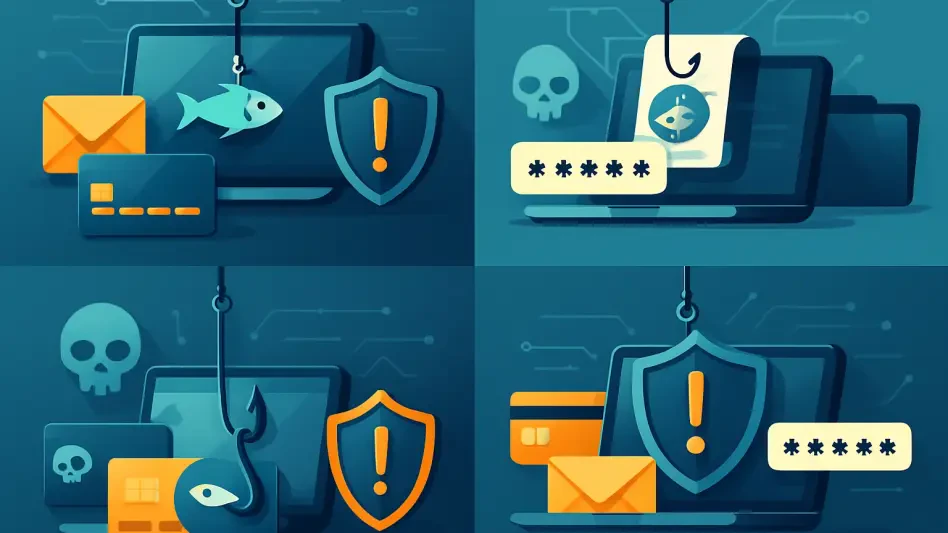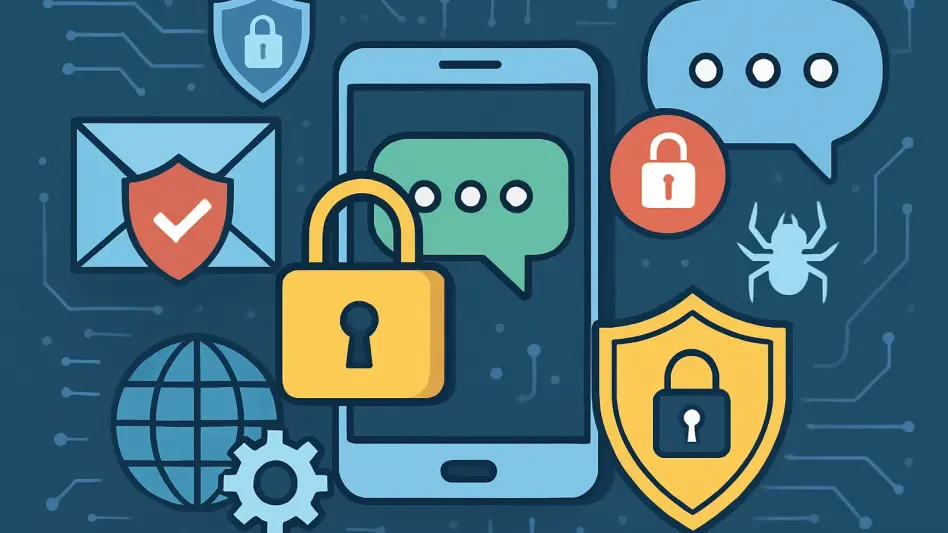Operational Technology (OT) environments are critical to the functioning of various industries, from manufacturing to energy production. However, these environments are increasingly becoming targets for cyber threats. While technological solutions are essential, human behavior plays a pivotal role in ensuring the security of OT systems. This article explores the importance of managing human behavior and training to enhance OT security.
The Influence of Human Behavior on OT Security
Understanding Human Behavior in OT Environments
Human behavior can significantly impact the security of OT environments. Mistakes, whether intentional or inadvertent, can introduce vulnerabilities that cyber threats can exploit. Misconfigurations, lack of awareness, and neglect are common issues that can compromise security. On the other hand, informed and vigilant behavior can mitigate these risks. Understanding how human behavior influences OT security is crucial for identifying areas for improvement.
Human behavior in OT environments is complex and multifaceted, with the potential to either fortify or undermine security measures. People often serve as the first line of defense against cyber attacks, making awareness and adherence to security protocols vital. However, human error, such as accidental misconfigurations or neglecting updates, can create significant vulnerabilities that cybercriminals can exploit. For example, an employee inadvertently opening a phishing email can lead to malware infecting the entire OT network, causing disruptions and potential financial losses. By comprehensively understanding these behavioral impacts, organizations can identify specific areas where security training and improvements are necessary.
The Double-Edged Sword of Human Actions
Human actions can be both the weakest link and the strongest defense in OT security. While errors and negligence can create security gaps, proactive and informed behavior can serve as a robust defense mechanism. It is essential to manage human behavior effectively to reduce vulnerabilities and enhance security.
This duality of human actions underscores the necessity of fostering a security-conscious culture within OT environments. Employees must be encouraged and empowered not only to follow established protocols but also to remain vigilant and proactive in identifying potential threats. Proactive measures, such as regular audits and encouraging a culture of reporting suspicious activities, can transform human behavior from a potential liability into a critical asset. Training programs that underscore the real-world consequences of security lapses and emphasize personal accountability are crucial in this endeavor. By addressing both sides of this double-edged sword, organizations can significantly bolster their defensive posture against cyber threats.
Security Awareness and Training
Importance of Tailored Training Programs
Training employees to understand security protocols and procedures is crucial for OT security. Effective training programs should be tailored to the specific needs of the OT environment. These programs should focus on practical, scenario-based learning to ensure that employees can apply their knowledge in real-world situations.
Tailored training programs should consider the unique complexities and operational challenges of OT environments. Generic training modules often fall short in addressing specific security needs related to industrial control systems (ICS) and other OT components. Scenario-based learning, where employees face simulated attacks in a controlled setting, can significantly enhance their ability to respond to actual threats. Such practical exercises help in translating theoretical knowledge into actionable skills, thereby improving overall security preparedness. Additionally, periodic refresher courses and updates on emerging threats and technologies ensure that employees remain vigilant and up-to-date with the latest security practices.
Enhancing Attack and Defense Awareness
Regular engineering-driven, consequence-based cybersecurity tabletop exercises and interactive workshops can significantly enhance attack and defense awareness. These exercises help employees understand potential threats and how to respond effectively. Continuous learning models and real-time feedback are essential for maintaining high levels of security awareness.
Tabletop exercises are instrumental in preparing employees for real-world cyber threats by simulating various attack scenarios and their potential impacts. These exercises allow participants to role-play both attackers and defenders, providing a comprehensive understanding of the tactics, techniques, and procedures (TTPs) employed by cybercriminals. Interactive workshops further reinforce this knowledge by facilitating hands-on practice in simulated environments. Real-time feedback during these sessions helps pinpoint areas for improvement and reinforces best practices. Continuous learning models, incorporating regular training sessions and updates on evolving threats, ensure that employees remain well-equipped to handle cybersecurity challenges.
Balancing Security with Operational Efficiency
Integrating Security Controls into Workflows
Security measures must not compromise operational efficiency. A nuanced approach that integrates purpose-built ICS/OT security controls into existing workflows is essential. These controls should be designed to enhance security without impeding productivity. Collaboration between IT and OT teams is crucial for understanding and addressing operational barriers to cybersecurity measures.
Integrating security controls seamlessly within existing workflows requires a deep understanding of operational needs and constraints. Purpose-built ICS/OT security solutions must be designed to operate within these parameters, ensuring they do not hinder productivity. Collaboration between IT and OT teams is essential in this regard, as it promotes a mutual understanding of the unique challenges each group faces. This collaborative effort ensures that security measures are both effective and minimally disruptive to daily operations. By approaching security integration thoughtfully, organizations can maintain operational efficiency while significantly reducing their vulnerability to cyber threats.
Addressing Potential Conflicts
IT and OT teams must work together to address potential conflicts between security measures and operational priorities. This collaboration ensures that security solutions are practical and do not hinder productivity. By balancing security with usability, organizations can maintain high levels of operational efficiency while ensuring robust security.
Potential conflicts often arise when security measures are perceived as obstacles to operational efficiency. IT and OT personnel must develop a shared understanding and work collaboratively to reconcile these differences. Regular meetings and joint task forces can facilitate this alignment, ensuring that security protocols are both practical and effective. Additionally, adopting a flexible approach that allows for the customization of security measures based on specific operational requirements can help mitigate any adverse impacts on productivity. By fostering open communication and collaboration, organizations can achieve a balance between stringent security measures and seamless operational efficiency.
Policies and Procedural Controls
Clear and Enforceable Security Policies
Clear and enforceable security policies are necessary for mitigating human-related security risks. These policies should address access control, incident reporting, and the use of personal devices within OT environments. A robust incident response plan with defined roles and responsibilities is vital for effectively managing security incidents.
Well-documented policies provide a structured framework for employees to follow, thereby minimizing confusion and reducing the risk of security breaches. Clear guidelines on access control ensure that only authorized personnel can access sensitive OT systems, while incident reporting protocols enable timely identification and mitigation of potential threats. Restricting the use of personal devices within OT environments further reduces the risk of introducing vulnerabilities. A comprehensive incident response plan delineates the roles and responsibilities of each team member during a security incident, ensuring a coordinated and effective response. Regular reviews and updates of these policies and procedures are essential to address evolving threats and operational changes.
Developing Robust Incident Response Plans
A well-defined incident response plan is essential for addressing security incidents effectively. This plan should outline the roles and responsibilities of each team member, ensuring a coordinated and efficient response. Regular drills and practice exercises can help refine the incident response plan and improve overall preparedness.
Incident response plans serve as blueprints for managing and mitigating the impact of security incidents. These plans should detail the steps to be taken during various types of incidents, from initial detection and containment to eradication and recovery. Clearly defined roles and responsibilities ensure that each team member knows their duties and can act swiftly and decisively. Regular drills and exercises, simulating different incident scenarios, help test and refine these plans, ensuring they remain effective and up-to-date. Continuous feedback from these drills allows organizations to identify areas for improvement and make necessary adjustments, thereby enhancing overall preparedness for real-world security incidents.
Technological Solutions for Managing Human Behavior
Enhancing Visibility and Control
Technology can aid in managing and improving human behavior by providing tools that enhance visibility and control over OT environments. Solutions such as behavioral analytics, automated policy enforcement, and real-time monitoring can help identify and mitigate risky behaviors. These tools provide valuable insights into employee actions and help organizations address potential security issues proactively.
Behavioral analytics tools analyze patterns of user activity to identify anomalies that may indicate security risks. These tools can provide real-time alerts of suspicious behavior, enabling quick intervention before a potential breach occurs. Automated policy enforcement ensures that security protocols are consistently applied across the network, reducing the likelihood of human error. Real-time monitoring tools offer continuous visibility into the OT environment, allowing for the immediate detection and mitigation of threats. By leveraging these technological solutions, organizations can proactively manage and influence employee behavior, significantly enhancing overall security posture.
Implementing a Defense-in-Depth Strategy
While technology is essential, it is insufficient on its own. A defense-in-depth strategy that combines technical and procedural controls is necessary for managing human-related security risks effectively. This multi-faceted approach ensures that organizations have multiple layers of defense, reducing the likelihood of successful cyber attacks.
A defense-in-depth strategy relies on the principle of layering multiple security measures to create a robust barrier against cyber threats. This approach combines technical controls, such as firewalls, intrusion detection systems, and encryption, with procedural measures, including policies, training, and incident response plans. Each layer of defense addresses different aspects of security, making it harder for attackers to penetrate and cause damage. By integrating these layered defenses, organizations can more effectively manage human-related security risks, as well as other vulnerabilities. Continuous evaluation and updating of the defense-in-depth strategy are essential to adapt to the evolving threat landscape and ensure sustained protection.
Creating a Security-Conscious Culture
Fostering a Security-First Mindset
Establishing a security-conscious culture is crucial for ensuring collective responsibility for OT security. This involves regular communication, leadership commitment, and a collaborative approach. Security must be seen as a shared responsibility across all organizational levels, with everyone contributing to a secure OT environment.
A security-first mindset starts with leadership setting the tone and demonstrating a strong commitment to security practices. Regular communication about the importance of security and the role each employee plays in maintaining it reinforces this message. Encouraging a collaborative approach where employees feel empowered to report potential threats and participate in security initiatives further strengthens this culture. Regular training sessions, security awareness campaigns, and recognition of employees who demonstrate exemplary security practices can help embed this mindset within the organization. By fostering a collective sense of responsibility, organizations can create a resilient OT environment that prioritizes security.
Aligning with Existing Safety Culture
Organizations should align their security initiatives with the existing physical safety culture. By integrating security into the broader safety framework, organizations can create a cohesive approach that prioritizes both physical and cyber safety. Leadership should lead by example, demonstrating a commitment to security and encouraging employees to do the same.
Aligning cybersecurity with physical safety measures helps create a unified approach to risk management. Many principles of physical safety, such as vigilance, adherence to protocols, and continuous improvement, are directly applicable to cybersecurity. Leadership must exemplify this integration by embedding security considerations into all aspects of operations and decision-making processes. Employees should be trained to view cybersecurity as an extension of their existing safety responsibilities. This alignment not only streamlines training and compliance efforts but also fosters a holistic view of safety and security within the organization. By bridging these two critical areas, organizations can ensure comprehensive protection of both physical and digital assets.
Continuous Improvement and Feedback
Regular Practice and Drills
Continuous improvement is essential for maintaining high levels of OT security. Regular practice and drills help employees stay prepared for potential security incidents. These exercises provide valuable feedback, allowing organizations to refine their security measures and improve overall preparedness.
Regular drills simulate real-world attack scenarios, helping employees practice their response in a controlled environment. These exercises highlight potential weaknesses in current security measures and response plans, offering opportunities for improvement. By conducting regular practice sessions, organizations ensure that their teams remain agile and ready to respond to evolving threats. The feedback gathered from these drills is instrumental in identifying gaps and enhancing existing security protocols. Consistently refining these measures based on practical experience ensures that the organization is always prepared to handle security incidents effectively.
Leveraging Feedback for Improvement
Operational Technology (OT) environments are vital for industries ranging from manufacturing to energy production. These systems manage, monitor, and control industrial operations, making them essential for the smooth functioning of various sectors. However, the increasing rise in cyber threats has turned OT environments into prime targets for cyber attackers. While implementing technological defenses is crucial, the human element remains a significant factor in ensuring the security of OT systems.
Human behavior can either strengthen or weaken the security of OT environments. Employees can inadvertently cause security breaches if they are not adequately trained or unaware of best practices. Therefore, managing human behavior and providing comprehensive training are pivotal to enhancing the security of OT systems. Training programs focusing on cybersecurity awareness can empower employees to recognize potential threats and respond appropriately.
Moreover, fostering a culture of security within organizations involves consistently reinforcing the importance of cybersecurity and encouraging vigilance. Regular drills and updated training modules can help keep security top of mind and adapt to evolving threats. In this way, human behavior becomes a critical layer of defense, complementing technological measures.
By prioritizing both technology and the human factor, industries can better safeguard their OT environments. Managing human behavior and consistent training not only enhance OT security but also ensure the uninterrupted and efficient operation of critical industrial processes.







